Algae (seaweed)
Seaweed is a loose colloquial term encompassing macroscopic, multicellular, benthic
marine algae. The term includes some members of the red, brown and green algae.
Seaweeds can also be classified by use (as food, medicine, fertilizer, industrial,
etc.). Like all algae, seaweeds are not plants. A seaweed may belong to one of
several groups of multicellular algae: the red algae, green algae, and brown algae.
As these three groups are not thought to have a common multicellular ancestor, the
seaweeds are a polyphyletic group. In addition, some tuft-forming bluegreen algae
(Cyanobacteria) are sometimes considered to be seaweeds — "seaweed" is a colloquial
term and lacks a formal definition. Two specific environmental requirements dominate
seaweed ecology. These are the presence of seawater (or at least brackish water) and
the presence of light sufficient to drive photosynthesis. Another common requirement
is a firm attachment point. As a result, seaweeds most commonly inhabit the littoral
zone and within that zone more frequently on rocky shores than on sand or shingle.
Seaweeds occupy a wide range of ecological niches. The highest elevation is only
wetted by the tops of sea spray, the lowest is several meters deep. In some areas,
littoral seaweeds can extend several miles out to sea. The limiting factor in such
cases is sunlight availability. The deepest living seaweeds are some species of red
algae. A number of species such as Sargassum have adapted to a fully planktonic
niche and are free-floating, depending on gas-filled sacs to maintain an acceptable
depth. Others have adapted to live in tidal rock pools. In this habitat seaweeds
must withstand rapidly changing temperature and salinity and even occasional drying.
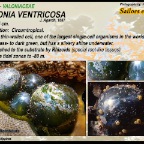
Valonia ventricosa - Valoniaceae
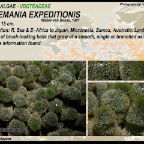
Tydemania expeditiones - Udoteaceae
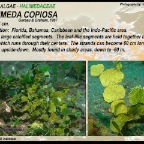
Halimeda copiosa - Halimedaceae
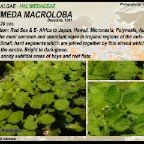
Halimeda macroloba - Halimedaceae
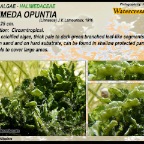
Halimeda opuntia - Halimedaceae
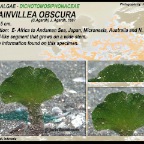
Avrainvillea obscura - Dichotomosiphonaceae
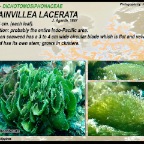
Caulerpa racemosa - Caulerpaceae
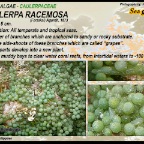
Caulerpa serrulata - Caulerpaceae
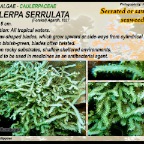
Dictyosphaeria versluysii - Pithophoraceae
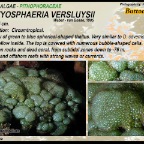
Neomeris annulata - Dasycladaceae
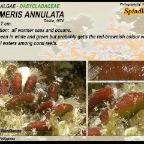
Codium spongiosum - Codiaceae
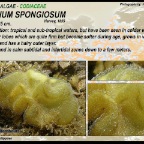
Ulva intestinalis- Ulvaceae

Sargassum fluitans - Sargassaceae
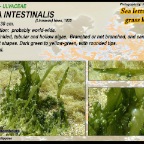
Hydroclathrus clathratus- Scytosiphonaceae
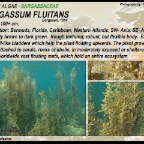
Padina australis - Dictyotaceae
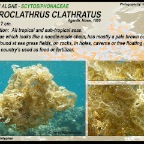
Zellera tawallina - Delesseseriaceae
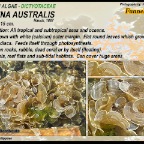
Halymenia durvillei - Halymeniaceae
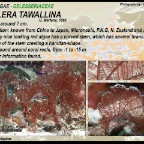
Gibsmithia hawaiiensis - Dumonthiaceae
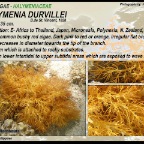
Tricleocarpa fragilis - Galaxauraceae
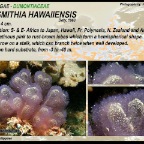
Peyssonnelia sp. - Peyssonneliaceae
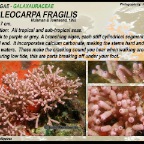
Peyssonnelia sp.1 - Peyssonneliaceae
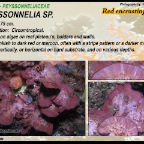
Lithothamnion proliferum - Lithothamniaceae
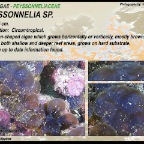
Cyanobacteria - Red slime algae


